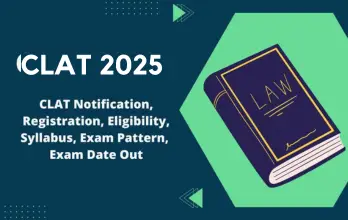
The Consortium of NLUs has always been dedicated to facilitating candidates' preparation for CLAT, the Common Law Admission Test. As part of their ongoing efforts to create a student-friendly and accessible examination, the Consortium has announced a significant change for CLAT 2026. This year, the number of questions in the CLAT 2026 exam has been reduced from 150 to 120.
To assist you in adapting to the changes introduced in the CLAT exam pattern, we have specifically designed a CLAT new pattern mock test that will be instrumental in your CLAT 2026 preparation. The CLAT new pattern mock test is tailored to simulate the latest pattern, topic weightage, and difficulty level of questions and provide you with a realistic exam experience.
This blog will explore the major impacts of this change, discuss how you can adapt your strategy with CLAT new pattern mock tests, and highlight the exciting opportunities that the latest CLAT pattern presents for aspiring law students.
CLAT Previous Pattern & Challenges
The previous pattern of CLAT consisted of 150 multiple-choice questions, with each question carrying one mark. The total duration of the exam was two hours, during which candidates were required to answer the questions. It evaluated the candidates' knowledge in various areas, including the English Language, Current Affairs (including General Knowledge), Legal Reasoning, Logical Reasoning, and Quantitative Technique.
• The previous pattern of CLAT placed a significant emphasis on testing students' speed, quick reading abilities, and comprehension skills.
• It was a challenge for CLAT aspirants to answer 150 questions within a limited time frame of 120 minutes.
• It required a balance between speed and accuracy to secure a good score and secure admission to the top NLUs.
Achieving a high score within this time constraint demanded not only accurate responses but also a swift and efficient approach to solving the questions. However, with the recent changes in the CLAT exam pattern, the new pattern provides a more balanced opportunity for students to demonstrate their reading comprehension skills & critical thinking abilities. It enables aspirants to engage with the questions more effectively, leading to improved accuracy and potentially higher scores in the CLAT exam.
The New Pattern of CLAT 2026
The CLAT exam is a highly competitive and sought-after entrance test for law aspirants, and being familiar with its format and structure is crucial for effective preparation. Let's explore the key components and changes introduced in the CLAT exam pattern to ensure you are well-prepared for the upcoming examination.
- The Undergraduate (“UG”) CLAT 2026, for admissions to the Undergraduate courses at the participating National Law Universities shall comprise 120 questions instead of 150 questions as in previous years.
- There is no change in the time limit allowed for the exam, you will have 2 hours to complete the test, as in previous years.
- The 120 questions will continue to be organised into five sections, that is, English Language, Current Affairs Including General Knowledge, Legal Reasoning, Logical Reasoning, and Quantitative Techniques.
To provide you with a clear understanding of the CLAT 2026 exam format, presented below is a concise overview in tabular form.
| Features |
UG Programme (5-year integrated LL.B.) |
| Mode of Exam | Offline |
| Duration | 2 Hours |
| Question Format | Multiple Choice Questions (MCQ) |
| Maximum Questions | 120 Questions |
| Maximum Marks | 120 Marks |
| Subjects | English Language, and Current Affairs including General Knowledge, Legal Reasoning, Logical Reasoning, and Quantitative Techniques. |
| Medium of Exam | English |
| Exam date | - |
| Negative Marking Scheme | Yes (-0.25 marks for every wrong answer) |
| Official Website | https://consortiumofnlus.ac.in |
CLAT 2026 Mock Tests based on the Latest Pattern
Before moving further with your CLAT 2026 preparation, it is crucial to become thoroughly familiar with the latest changes announced by the Consortium & understand how this change will impact the overall structure of the exam as understanding these changes will provide you with a clear direction and enable you to tailor your preparation strategy accordingly.
In line with the recent announcement by the Consortium of NLUs regarding the reduction in the number of questions and to assist law aspirants in this transition, Smartkeeda have introduced CLAT new pattern mock test that aligns with the latest changes. The CLAT new pattern mock test is designed to mirror the latest pattern of CLAT, enabling you to familiarize yourself with the new structure and adapt to the changes effectively.
Here's is a brief overview of the CLAT New Pattern Mock Tests based on the Latest pattern and the weightage of topics to be asked in the exam:
| Section | Number of Questions | Weightage |
| English Language | 25 Questions | 20% |
| GK & Current Affairs | 30 Questions | 25% |
| Logical Reasoning | 25 Questions | 20% |
| Legal Reasoning | 30 Questions | 25% |
| Quantitative Techniques | 10 Questions | 10% |
| Total | 120 Questions | 100% |
Our team of experts has thoroughly analysed the prevailing trends, previous patterns, and designed CLAT new pattern mock test to familiarize yourself with the latest pattern. By attempting the CLAT new pattern mock test at Smartkeeda, you can gain valuable insights into the potential structure, question types, and time management requirements of CLAT 2026.
Revamping Your Strategy: Adapting to the New CLAT Pattern
With the introduction of the new CLAT pattern, it becomes imperative to adapt and modify your preparation strategy to align with the updated exam structure. The changes in the CLAT pattern will directly impact the cutoff and the score required to get admission to the top 5 NLUs, therefore, it is essential to understand these changes and tailor your preparation accordingly to ensure you are well-equipped to tackle the exam.
Let us delve into the modifications you should incorporate into your preparation strategy to effectively adapt to the new CLAT pattern:
Concept-Based Strategy:
Despite the reduction in the number of questions, it is important to note that there is no change in the syllabus, topics, or difficulty level of the questions. Therefore, your focus should remain on improving your reading abilities and building a strong conceptual understanding of the subjects. Continuously revise current affairs & ensure accuracy in answering the reduced number of questions.
Practice-Based Strategy:
Previously, securing 95+ marks out of 150 was a common target for admission to top NLUs. This required a rigorous practice to maintain a balance of speed and accuracy. However, with the new pattern, your focus should shift more towards accuracy during CLAT mock tests and practice sessions.
As the number of questions has been reduced, it is important to note that top aspirants will find it feasible to attempt all 120 questions within the allocated time. Hence, it is crucial for you to practice extensively to ensure that you can confidently and accurately tackle the entire paper in the given time.
Strengthening Analytical Skills:
With fewer questions to answer, the new pattern will emphasize the importance of critical thinking and analytical skills. Therefore, you should practice solving complex problems, legal reasoning scenarios, and logical puzzles to enhance your ability to analyze information and arrive at well-reasoned answers
Efficient Time Management: Current Legal Comprehensions
In the new CLAT pattern, effective time management becomes even more attainable, allowing you to comfortably attempt all 120 questions. By strategically organizing your approach and focusing on time-saving sections, you can optimize your time management and complete the entire paper with accuracy.
To build confidence & save time, you can begin with the general awareness section and then move to the quant section as these sections of CLAT typically require less time to answer. By quickly answering the questions in these sections, you can save valuable time for other sections and move further with confidence.
How will it affect your CLAT 2026 Prep? Get All the Details in Hindi
Smartkeeda Mock Tests: Your Key to Adapting to the Latest CLAT Changes
Adapting to the changes introduced in CLAT requires more than just theoretical knowledge, it demands practical experience. You cannot fully grasp the impact of the changes until you immerse yourself in the new exam pattern. That's where Smartkeeda CLAT’s new pattern mock tests come in. By attempting the CLAT mock tests based on the latest pattern, you can familiarize yourself with the revised structure, practice time management, and develop effective strategies to score well in CLAT 2026 exam.
Let us explore how CLAT new pattern mock tests by Smartkeeda will help you in adapting to the latest CLAT changes:
• One important aspect we have considered is the proportional reduction of questions in each section. As the overall number of questions has been reduced, we have made the necessary adjustments in our mock test to reflect this change accurately.
• In response to the latest CLAT changes, we have increased our emphasis on developing and accessing critical thinking abilities through our mock tests. Our CLAT mock tests include carefully crafted questions that challenge your critical thinking skills, to help you to navigate through the updated CLAT exam.
• By engaging with our new pattern CLAT mock test, you will not only become familiar with the adjusted question structure but also develop essential skills such as time management, critical thinking, and problem-solving abilities. This comprehensive preparation will give you a competitive edge and increase your chances of achieving a favorable rank in CLAT 2026.
• Our new pattern CLAT mock test will serve as a valuable tool to assess your strengths and weaknesses, enabling you to identify areas for improvement and refine your preparation strategy accordingly.
Must read this blog if you want to crack CLAT 2026 “How to crack CLAT 2026 | Complete Preparation Plan”
We understand the significance of staying up-to-date with the latest changes and requirements of the CLAT exam, and therefore we have designed this new pattern CLAT mock test to help you adapt with the latest changes in the CLAT exam pattern. With our comprehensive and meticulously crafted CLAT mock test, you can confidently navigate the new pattern, refine your skills, and enhance your performance in the CLAT 2025 exam. Embrace this opportunity to enhance your skills, gain confidence, and maximize your potential on the path to a successful legal career.

Author : Rohit Sharma
Hi, I am Rohit Sharma, the head of the Law exams vertical at Smartkeeda and an alumnus of NLU Punjab. Having successfully cleared the CLAT exam twice, I am currently engaged in teaching Legal Reasoning on the LawEx YouTube channel. Moreover, I contribute by writing blogs that are specifically tailored to the CLAT exams.
FAQ’s
The major change introduced in the CLAT 2026 exam pattern is the reduction in the number of questions. Previously, the CLAT exam consisted of 150 questions, but with the latest update, the number of questions has been decreased to 120.
No, as per the available information, there has been no announcement regarding a change in the time limit allowed to attempt the CLAT question paper.
CLAT 2025 will be conducted in offline mode.
the CLAT 2026 notification will be announced, and CLAT 2026 will be soon
Yes! Our mock test is designed to align with the latest pattern of the CLAT 2026.
CLAT's previous years' question papers provide valuable insights into the pattern and structure of the CLAT exam, allowing you to familiarize yourself with its nuances. By attempting these papers, you can gauge the level of your preparation and identify any gaps in your knowledge that you need to address during your preparation.
The CLAT mock test scores are indicative of your current performance. Regular practice and improvement on your weak areas can lead to better performance in the actual exam.
To manage time better during CLAT mock tests, prioritize your strongest portion or section and tackle it first. By doing so, you can quickly accumulate marks and build confidence. Once you have completed the section where you are most comfortable, move on to the time-consuming sections. This approach ensures that you have a solid lead in terms of marks and allows you to allocate more time to the sections that require additional effort and concentration.
To analyze your performance in CLAT mock tests, utilize the smart analysis tool available in the solution window of Smartkeeda mock tests. Using this tool, you can assess various aspects such as your speed, accuracy, time management skills, strong and weak areas and compare your performance with that of the topper. By leveraging the smart analysis tool, you can make targeted efforts to enhance your preparation for the CLAT exam.
It is generally recommended to take one full-length CLAT mock test and two to three sectional tests per week. After attempting the tests, it is crucial to analyze your performance, identify areas of improvement. To strengthen your weak topics, it is advisable to engage in targeted practice through CLAT Topic Tests and Reading Drills. This focused approach helps consolidate your understanding before attempting another CLAT full-length test.





